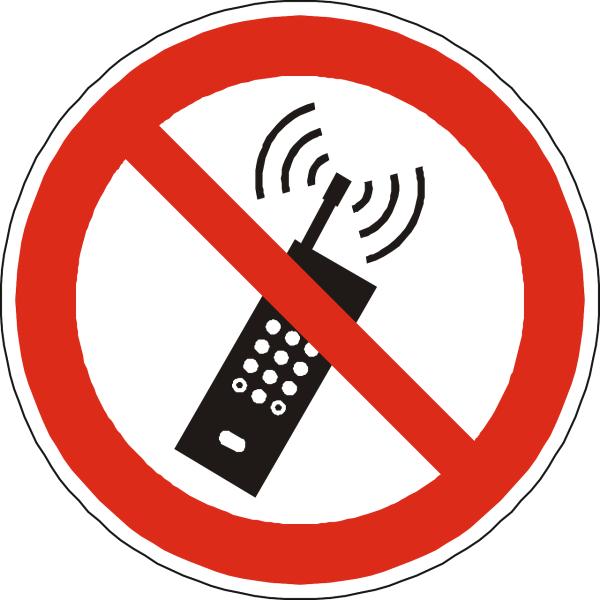We use rats and mice, of course, because there are a huge number of experiments that we can’t do on people – to learn the effects of a potentially harmful agent on humans, we have to involve some testing on non-human animals. If we can’t extrapolate the results of a study on, say, rats to humans, then the study is of limited utility.
Consider, for example, what we might have concluded about the toxicity of chocolate or garlic by studying their effects on dogs – Italian cuisine and the checkout line at most drug stores would be far different if we applied the results of that research to humans. On the other hand, elephants and naked mole rats rarely get cancer, which might make us blasé about smoking, the human papillomavirus (HPV), and UV radiation – all of which are known to cause cancer in humans. Similarly, when we study the effects of cell phone radiation on rats, a great deal of caution must be used when applying the results to humans.
The hard part about designing any experiment is figuring out how to do a good and ethical study that replicates an actual situation in which the results are meaningful to humans. Consider, for example, studying something that might cause cancer – but only very rarely. How can we learn anything about it? One way, of course, is to expose tens of thousands of organisms to the substance to see how many develop cancers compared to a control group with the same number of animals. But this is expensive – buying, raising, exposing, and studying several tens of thousands of mice or rats can take several years and costs a bundle of money.
One way around this problem is to increase the exposure – it’s not unusual for a higher dose of a substance to cause more cancers than a lower dose. So, to tease out an effect that’s small at low permitted doses, it might be necessary to increase the dose enough to see results from a smaller group of animals in a shorter time.
But are these results meaningful?
Consider an experiment to investigate the health effects of being hit with 1-gram rocks – but to save time, the researchers drop a ton of rocks on a single rat, concluding that because 1000 kg of rocks is 100% fatal to their test subject, 1 gram must be fatal one time in a million. Does this conclusion make sense? Certainly, most harmful agents do show a relatively linear increase in their effects with increasing doses – except at the very high and very low levels of exposure. An experiment that exposes rats to very high doses of cell phone radiation might not be relevant to rats (or humans) exposed to much lower levels of exposure.
Consider the nature of the exposure and the dose received.
When a person is holding a phone to their ear, the skin directly beneath the phone’s antenna (an internal antenna on most phones today) receives the highest dose at a distance of less than one centimeter. Since the strength of a radio signal drops with the square of the distance, this means that the skin just 2 inches (5 cm) from the antenna will receive a dose only about four percent as strong as the skin beneath the antenna. The dose drops even more as the distance increases. That dose is attenuated further by the skin, muscle, and any other tissue between the phone’s antenna and other parts of the body. For cell phone radiation to penetrate to my heart, it would undergo attenuation due to distance (about 30 cm in my case) and from passing through the tissues of my head, neck, and chest. My heart would be receiving less than 0.1% the dose as my ear from distance alone, and even less when considering absorption by my head and other tissues.
The recent NTP study of cell phone radiation, for example, exposed many rats to high levels of cell phone radiation, noting that these rats developed greater numbers of some rare cancers than did rats in the control group. But here’s the thing – the rats were continually exposed to very high levels of radiofrequency radiation across their entire bodies. Whole-body exposure negates the effects of an actual cell phone conversation - the attenuation of distance from the phone and the shielding effects of the body’s tissues (not to mention that rats have far less tissue than humans do). It’s also worth noting that exposing rats continuously to cell phone radiation is unrealistic – even my kids took breaks from their phones during meals, between calls, and while they slept.
To apply the results of this experiment in any meaningful manner, we need to be able to account for a few things:
- Rats are not people, and what’s harmful to a rat might not be harmful to a person
- Organisms often respond differently to very high and very low doses, even of a carcinogen
- We usually take a break from talking on the phone and are not exposed to the highest doses continuously
- A real-life exposure leads to variations in dose and dose rate due to distance and the shielding effects of the body’s tissues
- And this doesn’t even get into the statistics! More on this later….
Don’t get me wrong – we can learn a lot from studies of the effects of potentially harmful agents on animals. But we have to remember that any investigation has its limitations, and we cannot simply accept the results – good or bad – uncritically.
The Series
Part I – Do Cell Phones Cause Cancer
Part II – Radiofrequency Radiation and Cancer
Part III - Experimental Design (or why rats are not people – among other things)



